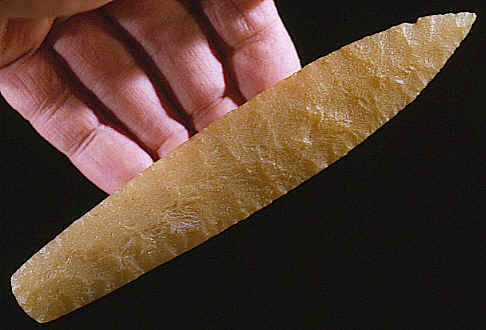|
AGATE BASIN POINT
This is one of the best examples of an Agate Basin points from Illinois. It's very well
made and longer than typical examples. This one measures slightly over 5
1/2 inches. The beautiful stone from which this spear point is made is one
of the reasons it is unique.
AGATE BASIN POINTS
Agate Basin points were named after the Agate Basin bison kill site in
eastern Wyoming. Excavations of the site exposed a large communal bison kill
located in an arroyo. It was first discovered when projectile points
(Agate Basin points) and extinct bison bones were found eroding from the
arroyo bank (Frison, C. George, 1982, p.1). A total of 169 broken and
complete Agate Basin points from this site are in known collections. The
Agate Basin site was collected
for some time by private individuals. Not all of the points found there
were recorded but it's believed that the 169 points represent the
majority of the projectile points found there (Frison, C. George, 1982,
p.80). |
